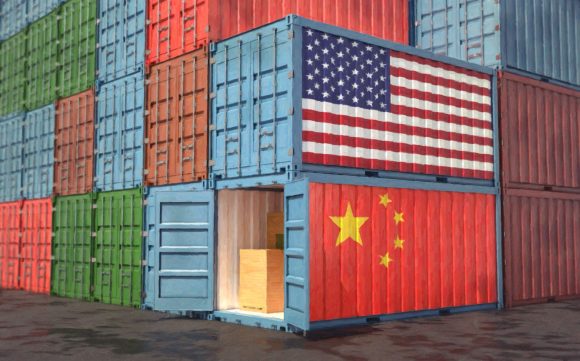We had an inquiry last Monday on an expensive CNC turning center from a machinery broker based in Chicago but representing a Chinese firm.
Thinking of a potential profit if we sold it, I asked Noah to quote the machine. His response was, “Dad, we can’t sell it to them. We are at war.”
I immediately knew he was correct. The parts made on this rare machine could be used in a missile or a drone that would threaten the United States or an ally like Taiwan.
Our next president, Donald Trump, has threatened a trade war with China. We are already clearly in a non-shooting battle with the country, led by the old communist disciple of Mao Tse Tsung, who sees the US as its primary enemy. What makes it more dangerous is that Chairman Xi’s country is in an economic tailspin that threatens to become a depression.
Their real estate failure, with empty cities of vacant apartments, dwarfs the American debacle of 2008. If population growth in America is stagnant, China’s is a disaster.
China’s takeover of Hong Kong has been an economic loser. Not long ago it was a thriving capitalist community with free elections. Today it is floundering.
Yet Chairman Xi still views the United States as a failing state which China will eventually defeat economically and with physical war if necessary.
China’s remaining strength lies in heavy industry and manufacturing. In order to support it he will use a price war, spying, and theft.
Our next President is threatening an expansion of the trade war that he began in his first term. What will this mean for the machining industry in America and other Western countries?
My view is that we will see a short-term upturn as companies continue their move away from China to protect their sources. This will provide a boost to the surviving machining companies here who are able to find people with the necessary skills. Immigration of able and willing workers may be the best approach to do that if the politics can be broached in the best way.
In the longer run, I fear that a China suffering even more under incompetent leadership could become war-like and more aggressive, cutting prices to undermine the US and a politically unstable Western Europe.
As the American lead in high tech leaves China further behind, China’s political leadership will become even more desperate to conquer it by any means. This could make a war with Taiwan look more necessary as the island’s lead in artificial intelligence chips is viewed as crucial for world power.
What could scare them, however, is observing how Israel and Ukraine have defeated or fought off countries seemingly more powerful.
The future is quite unclear, but it always is. I am not pessimistic because the creativity of America always seems to find a way. But I expect it to be a bumpy few years ahead.
Question: How do you think an increase in tariffs will affect your business?


4 Comments
Good question. Our raw material (zinc) is mined and smelted globally and traded on the London Metal Exchange. The material is kept in warehouses around the world. Hard to identify if the zinc you’re buying comes from a sanctioned country. Or if it’s cross traded (physically or financially) from a warehouse in a sanctioned country to a warehouse in a non-sanctioned country to eventually come into the US. Regardless, prices will probably increase through tariffs or trading inefficiencies trying to get around tariffs. Maybe a US producer of zinc benefits from tariffs, but the hundreds of US zinc users will likely pay more for their zinc.
Here’s an interesting story on China’s high speed rail industry. And how they make and break agreements
to get what they need. Has not worked out well for them so far.
https://youtu.be/w-R9iD_hNHk?si=GD2349frJ-DiqGZg
Consumers will pay. They always do. They’re the ones buying the final product. Farmers will get hurt, too, if retaliatory tariffs are imposed on one of our largest exports, farm products.
If we want to be an innovation economy, should we care where a low tech product like a T-shirt is made? I doubt tariffs will incent us to figure out how to make simple products at a competitive price, so we’ll be asking Americans to pay more for the status quo. This is even more likely since tariffs come and go with the political winds, making capital investment in innovation riskier.
As one business pundit recently observed, the US is good at taking an idea from zero to 1 mph (creativity), but China is better at going from 1 mph to 100 mph (productivity). That seems unlikely to change for a variety of reasons, one of which is that it is a lot easier to direct investment policy in an autocracy. Capital markets and government support, however, can do much to foster innovation in democracies.
And make no mistake, we’re behind. Ford Motor CEO Jim Farley not long ago returned from a review of China’s EV technology and manufacturing processes (much of it learned initially from joint ventures with western manufacturers and supported vigorously by China’s government) and declared their products and processes so refined they pose an existential threat to US manufacturers. As US manufacturers and our government ditch money losing electric cars and we double down on century old technology, the rest of the motoring world is going electric. Ten or twenty years from now, our products will be left behind, tariffs or not. Farley knows it. And when the tariffs come off as political winds change, we’ll have nothing to sell because we innovated nothing. It is not about protecting markets. It is about supporting innovation.
China’s miserable real estate market and poor central planning decisions will be a drag on its economy, but its ability to supply the developing world with affordable products will remain its strength. Instead of keeping out commodity products like T-shirts, we should double down on innovation and protecting our intellectual property. Tariffs, no matter on what imposed, will stagnate innovation, cost Americans, and do little to stop China’s productivity in a global economy.
Increased tariffs over the past 6-7 years has greatly benefitted our small job-shop machining and metal stamping/fabrication business. After losing 40% of our business to China in the previous decade, the work has slowly migrated back due to recent tariffs. The economic windfall has been a positive corporate margin (from basically zero for a decade), increased wages for our American workforce, increased investment in our domestic machinery and plant, and revitalized apprenticeship program for training tool and die. Not sure if the improved business environment will last, or if we can re-tool and rebuild our aging workforce quick enough to take advantage of the increased demand, but the outlook sure feels better today than it did before 2016.
Speaking in terms of tariff macroeconomics, the consumer may pay more in the short-term, but as long as the tariffs are at a reasonable level, supply chains will adjust in the long-term to a neutral cost. They always do. IMO improved manufacturing self-sufficiency for everything, from food & drugs, to apparel, to energy, and fabricated goods, is a goal that offers financial, environmental, and security benefits far and wide to our country, our communities, and our standard of living.